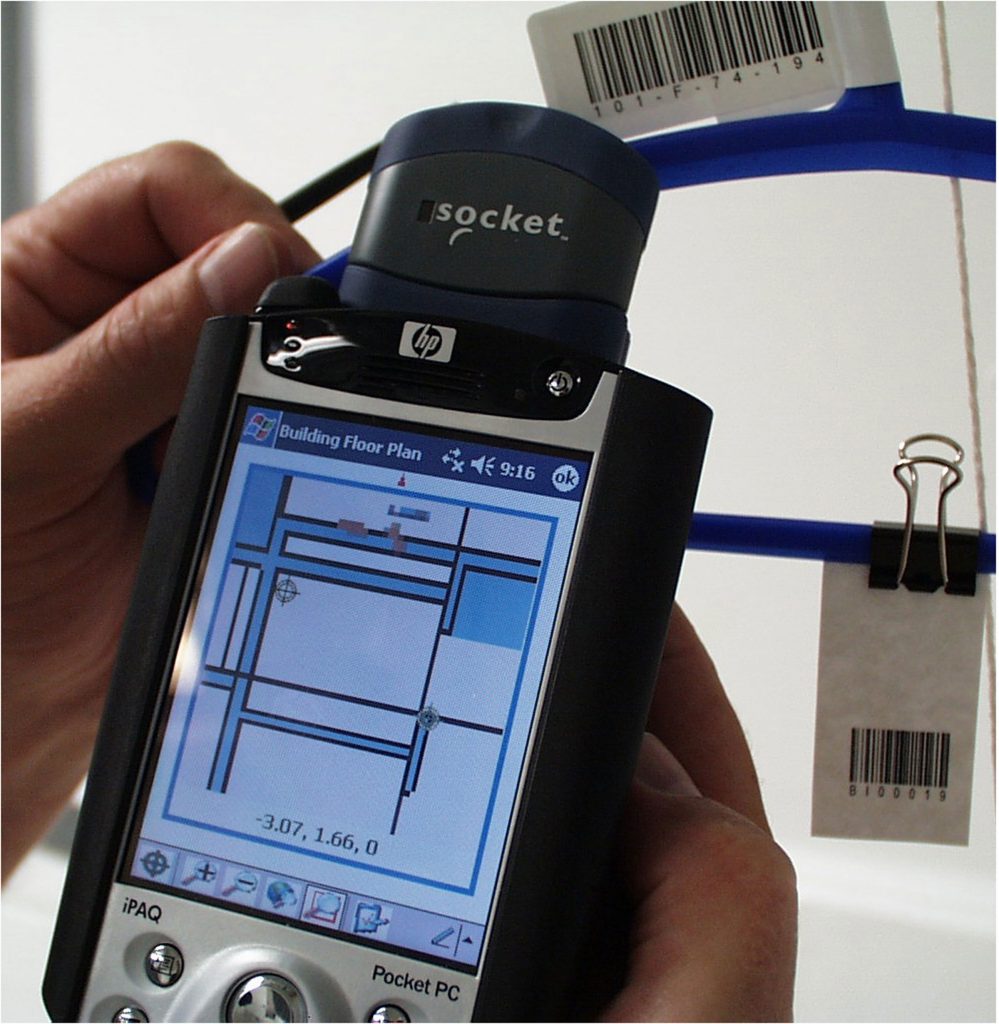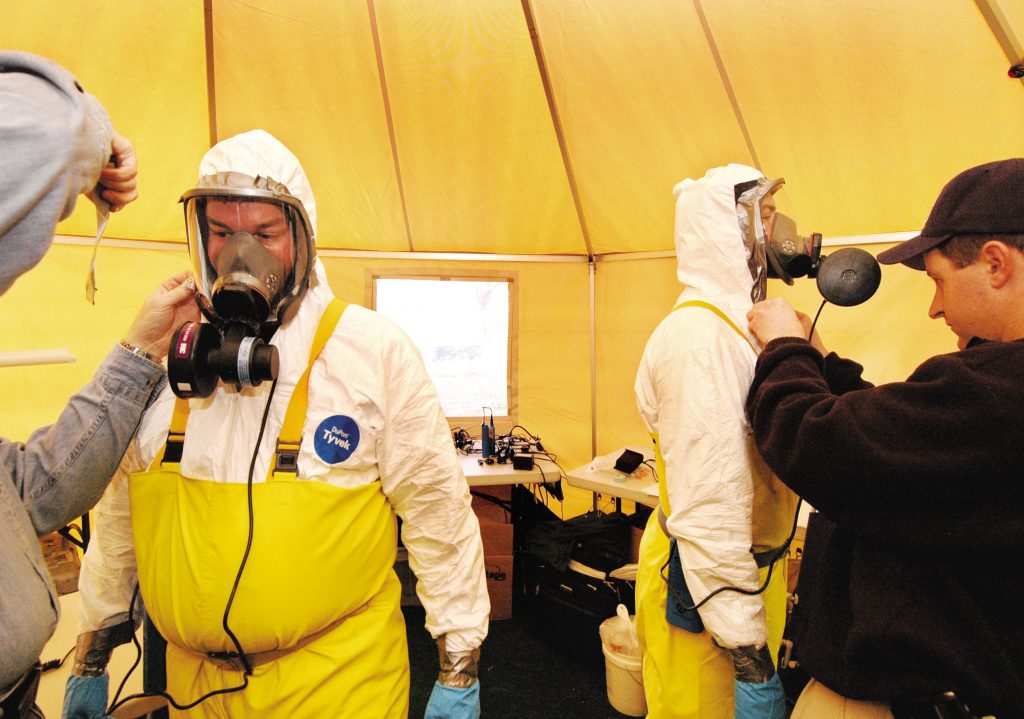
Download 300dpi JPEG image, “broom-scanner.jpg,” 608K (Media are welcome to download/publish this image with related news stories.)
ALBUQUERQUE, N.M. — Sandia National Laboratories researchers have developed a software-based tool called BROOM — short for Building Restoration Operations Optimization Model — to assist in the gathering of samples following a release of biological warfare agents in a public facility.
BROOM is intended to help officials of airports, transportation centers, and high-traffic public buildings during planning for a possible reoccupation and return to service and assist cleanup personnel in restoration operations.
A major piece of the BROOM tool is a hand-held electronic device that assists HazMat crews in collecting and managing the many thousands of samples that are collected to characterize contamination in a facility and to verify that the facility is clean following decontamination.
The three-year joint development project, a collaboration with Lawrence Livermore National Laboratory, is sponsored by the Department of Homeland Security and includes partnerships with San Francisco Bay area airports as model facilities for restoration. Sandia is a National Nuclear Security Administration lab.
Sandia researcher Mark Tucker says the main objective of the BROOM project is to develop methods to minimize the economic impact of a release of biological agent by conducting restoration operations more rapidly than can be done now.
“The current process in collecting samples is very cumbersome,” says Tucker. “BROOM helps streamline the process.”HazMat responders can gather samples only during short periods of time due to the heavy gear they must wear, and for safety reasons. To make it easy for the responders to carry the software tool, the researchers assembled a handheld device that incorporates the BROOM software, a barcode scanner, and a wireless laser range finder to accurately identify where the sample was taken.

Download 300dpi JPEG image, “prep.jpg,” 608K (Media are welcome to download/publish this image with related news stories.)
The handheld device looks simple, but lots of information can be stored in the pocket PC. The device also holds the contamination map and layout of the location where the responders are collecting samples.
The device’s scanner reads barcodes placed on vials where the samples are stored. Sample barcodes provide a way to monitor the transfer of samples from the field to the lab. They also help automate the process of merging field data with laboratory results. In addition to barcodes, data specific to each sample are recorded in the handheld device.
Information such as the sample type, surface type, surface orientation, surface area, and surface texture are recorded for each sample. The sample collector records himself as the person who acquired the data and may also write additional information about the sample in a notes field.
All data are then transferred to a PC outside the contaminated area by wireless transmission. The results are displayed on a map on both the handheld device and the PC.
The first sampling is done right after a determination is made of what the contamination is, where it occurred, and what techniques should be used to gather samples. If spores or other biological contaminants are found, the facility requires decontamination.
During the decontamination process, strips of paper containing a nonpathogenic bacterial spores similar to anthrax are mounted throughout a facility. Immediately following decontamination, these spore strips are collected and analyzed for live spores. If live spores are found on the spore strips, the decontamination process must be repeated.
Collection and analysis of the spore strips constitutes the second stage of sampling. The third stage focuses on clearance sampling to ensure that the area is safe and clean for reentry. The BROOM tool can be used to assist in each stage of the restoration process.
BROOM exercise
An exercise, in conjunction with the National Institute for Occupational Safety and Health (NIOSH), to test BROOM was held recently at Sandia.
NIOSH establishes standards and methods for biological sampling. Previous work done by NIOSH includes anthrax sampling at the Hart Senate Building and at the Brentwood and Trenton postal facilities after the 2001 anthrax incident.
The exercise at Sandia involved a release of a harmless simulant used to mimic a biological agent. NIOSH crews in full HazMat gear using the BROOM tool conducted a realistic sampling exercise.
During the first day of the three-day exercise 24 samples were collected and entered into BROOM. The diagram showed hot spots in the area where the contamination occurred. The remaining two days consisted of additional sample collection, as well as analyzing and testing BROOM.
The exercise was a tremendous success, says Tucker. “Although the NIOSH crews provided some feedback about minor changes to the BROOM software, they were, in general, very impressed with the product,” Tucker says. “In fact, they want to further evaluate BROOM by using it in their future sampling operations — both those that involve biological agents and those that involve more routine sampling operations for investigations of occupational hazards.”